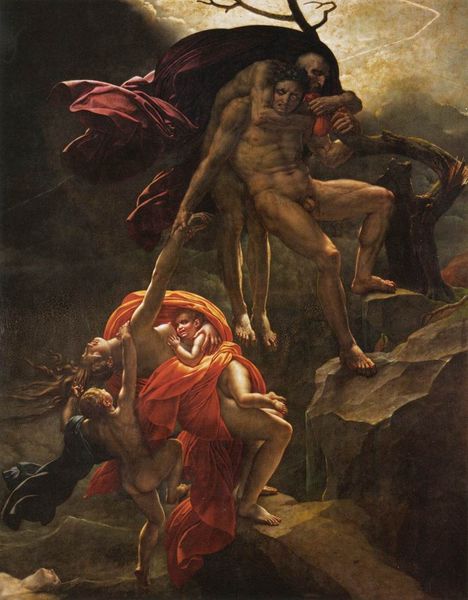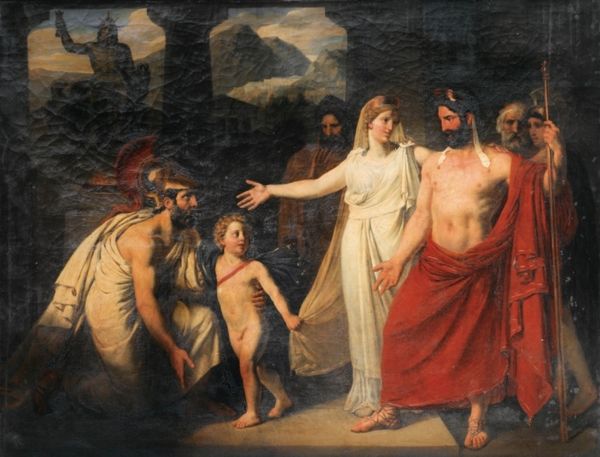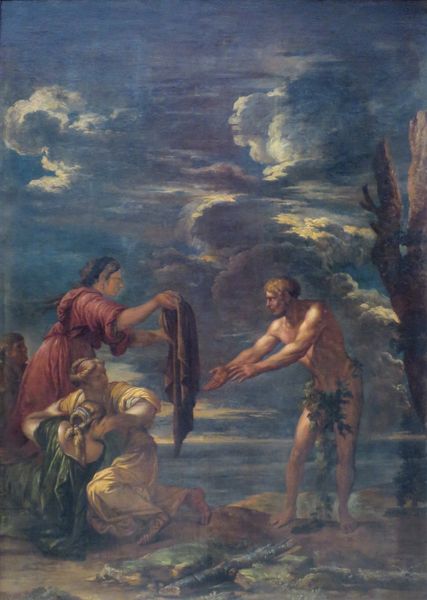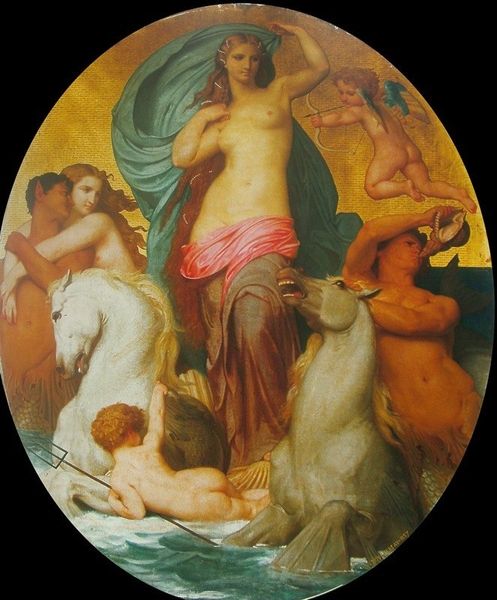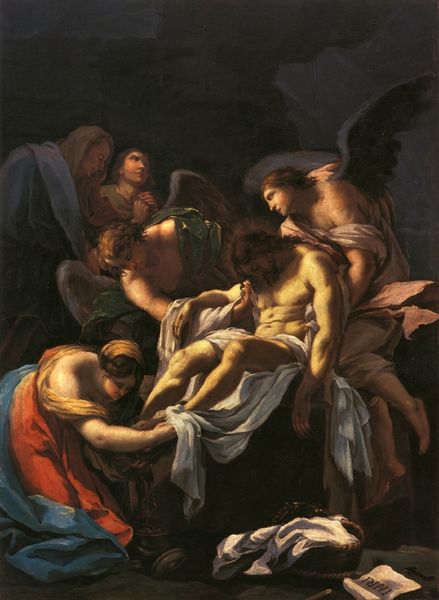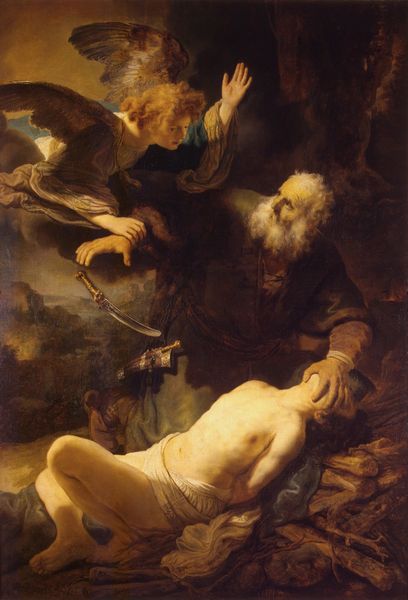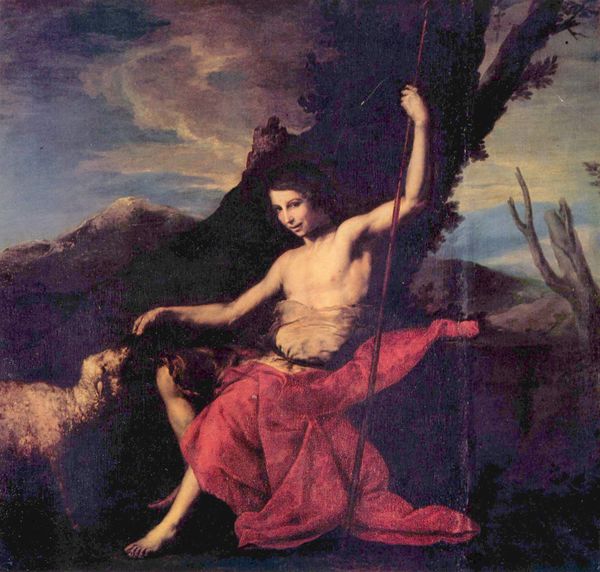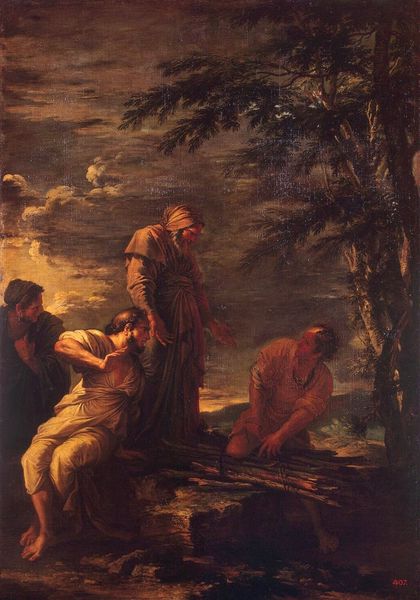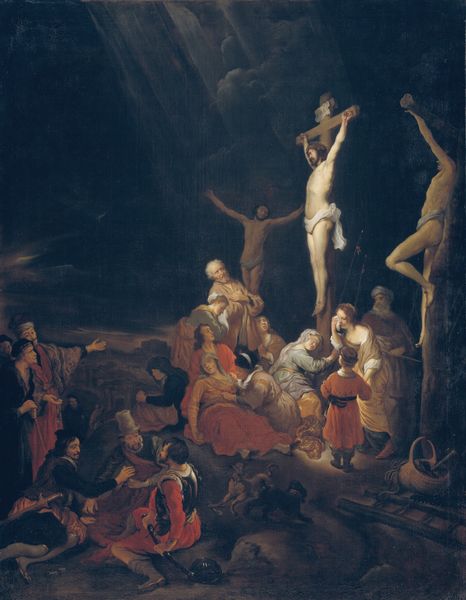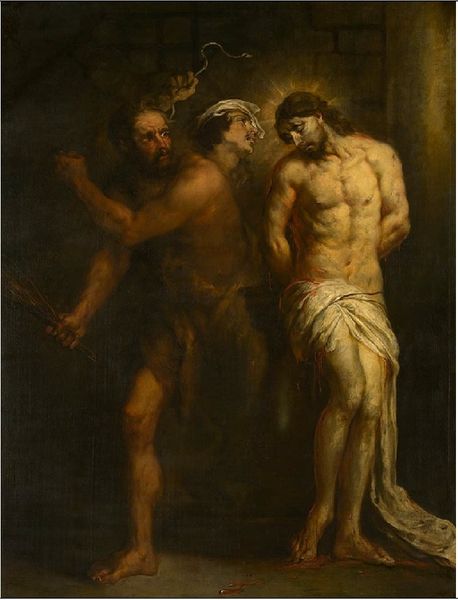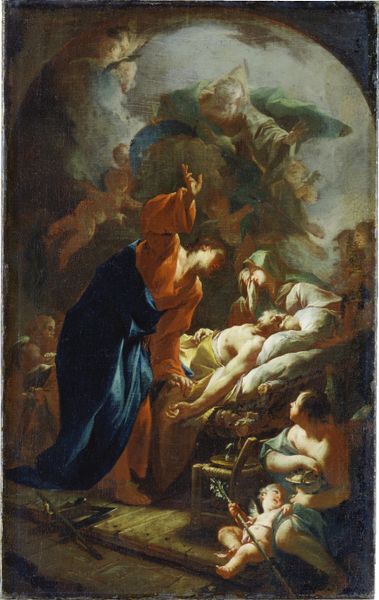
Jupiter and Mercury, in the form of visiting pilgrims Philemon and Baucis 1802
0:00
0:00
painting, oil-paint
#
allegory
#
painting
#
oil-paint
#
figuration
#
oil painting
#
romanticism
#
history-painting
Copyright: Public domain
Curator: The painting before us is titled "Jupiter and Mercury, in the form of visiting pilgrims Philemon and Baucis" completed in 1802 by Orest Kiprensky. It's rendered in oil on what appears to be canvas. Editor: A striking and almost theatrical arrangement. The deep contrasts in light and shadow, combined with that dominant figure draped in red, lend an intense drama to the scene. Curator: Absolutely. Kiprensky engages with the myth of Philemon and Baucis. The aged couple welcomed disguised gods into their home when others turned them away, so they were rewarded for their virtue, and the impious destroyed. See Jupiter and Mercury here bestowing divine power to destroy a surrounding village for their misdeeds? Editor: Yes, Jupiter wielding what looks like a thunderbolt, very dynamic. Note how the kneeling Philemon and Baucis look at Jupiter in astonishment and gratitude. What's captivating is the symbolism— hospitality, divine justice. Red, of course, for divine anger and judgement, contrasting with the more muted colours for Philemon and Baucis. There are very human dynamics with the divine, made intimate, if violent, to the home setting. Curator: Fascinating to consider the reception of such a work at the turn of the 19th century. Remember that oil paints would have been mixed by hand from pigments and oil and, I imagine, that such saturated colors as are seen on the God's robe, must have required expensive supplies. How would that message resonate for ordinary Russian people dealing with poverty? Editor: An interesting tension there. Is this divine power accessible? Out of reach? Perhaps, but their humbleness and demonstration of basic morals led to salvation. One aspect I noticed, especially the light upon the ruins is reminiscent of classical ideas. Almost like we are not just looking at devotion, but a history being painted. Curator: Indeed. It is quite compelling how Kiprensky blends these classical symbols with his very painterly technique. You begin to think, this canvas and paint may not just convey the symbol, but contain that symbolic gesture, to a painting that reflects back across epochs. Editor: I hadn't thought of that way before, and I now perceive greater purpose to how artists make material that carries messages. It leaves me with so much to ponder about the persistence of these stories through art.
Comments
No comments
Be the first to comment and join the conversation on the ultimate creative platform.
